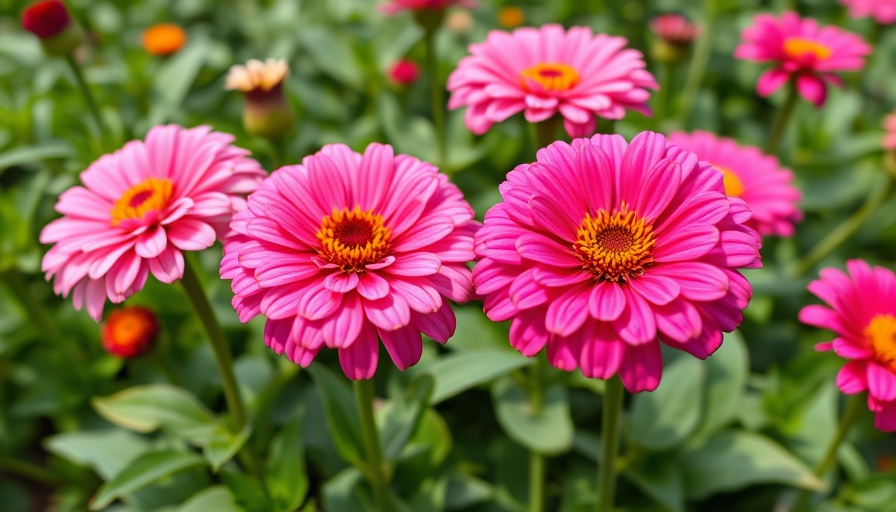
Brighten Your Garden with Zinnias: A Beginner's Guide
If you’re searching for a colorful and low-maintenance addition to your garden, zinnias are an excellent choice. With their large blooms and a rainbow of hues, these hardy flowers not only brighten the landscape but are also easy to grow and care for. Whether you want to fill your flower beds or create stunning cut bouquets, zinnias can fulfill your gardening dreams.
Why Choose Zinnias?
Zinnias are beloved for their vibrant colors and variety of sizes, making them a popular choice for both novice and experienced gardeners. Their name, derived from the Aztec term “plants that are hard on the eyes,” speaks volumes about their striking appearance. Additionally, zinnias attract pollinators like bees, butterflies, and hummingbirds, which enhances local biodiversity in your garden.
Getting Started with Zinnias
These annuals grow into large plants quickly and can be started from seeds either indoors or outdoors. If you're in a warmer climate, you can sow seeds directly in well-prepared soil after the last frost. Aim to plant them in a sunny spot with good drainage and ample space, as zinnias thrive best when they aren’t crowded.
Container Gardening: Zinnias on the Go
Zinnias also flourish in pots, making them ideal for urban gardeners with limited space. Use a good-quality potting mix for container gardening and ensure your pot has adequate drainage. Regular watering and deadheading spent blooms will keep your zinnias looking fresh all season long.
Best Practices for Zinnia Maintenance
Here's a rundown of essential care tips:
- Light: Zinnias love sunlight, so ensure they receive at least six hours of direct sunlight daily.
- Water: While zinnias are drought-tolerant, they prefer consistent moisture, especially during dry spells. Water deeply but avoid overwatering to prevent root rot.
- Fertilization: A balanced, slow-release fertilizer can boost growth but be careful not to overdo it; too much fertilizer can lead to excessive foliage growth at the expense of blooms.
- Pruning: Regularly deadhead to promote continued blooming and prevent your plants from going to seed too early.
Combatting Pests in Your Zinnia Patch
While zinnias are relatively pest-resistant, they can occasionally fall victim to common garden pests such as aphids and spider mites. Implementing organic pest control methods, like introducing beneficial insects or using insecticidal soap, can keep your flowers healthy and vibrant without harsh chemicals.
Common Zinnia Varieties to Consider
When selecting zinnia seeds, consider various options for color and bloom type:
- Oklahoma Salmon: Featuring soft pink and peach tones, these zinnias are lovely in both gardens and bouquets.
- Yellow Flame: A dynamic mix of yellow, orange, and deep magenta that evokes a sunset, perfect for a lively garden decor.
- Queeny Series: Known for their striking color combinations, these zinnias make a bold statement.
Conclusion: Create Your Own Floral Wonderland
Zinnias offer a fantastic opportunity for anyone looking to enhance their garden's vibrancy with minimal effort. With a range of colors and sizes, they fit seamlessly into any flower garden while inviting beneficial pollinators. Get started today, and soon, you’ll have a beautiful display of blooms to enjoy all summer long!
If you're ready to embrace the beauty of zinnias, gather your seeds, prepare your garden space, and step into the delightful world of flower gardening!
 Add Row
Add Row  Add
Add 




Write A Comment